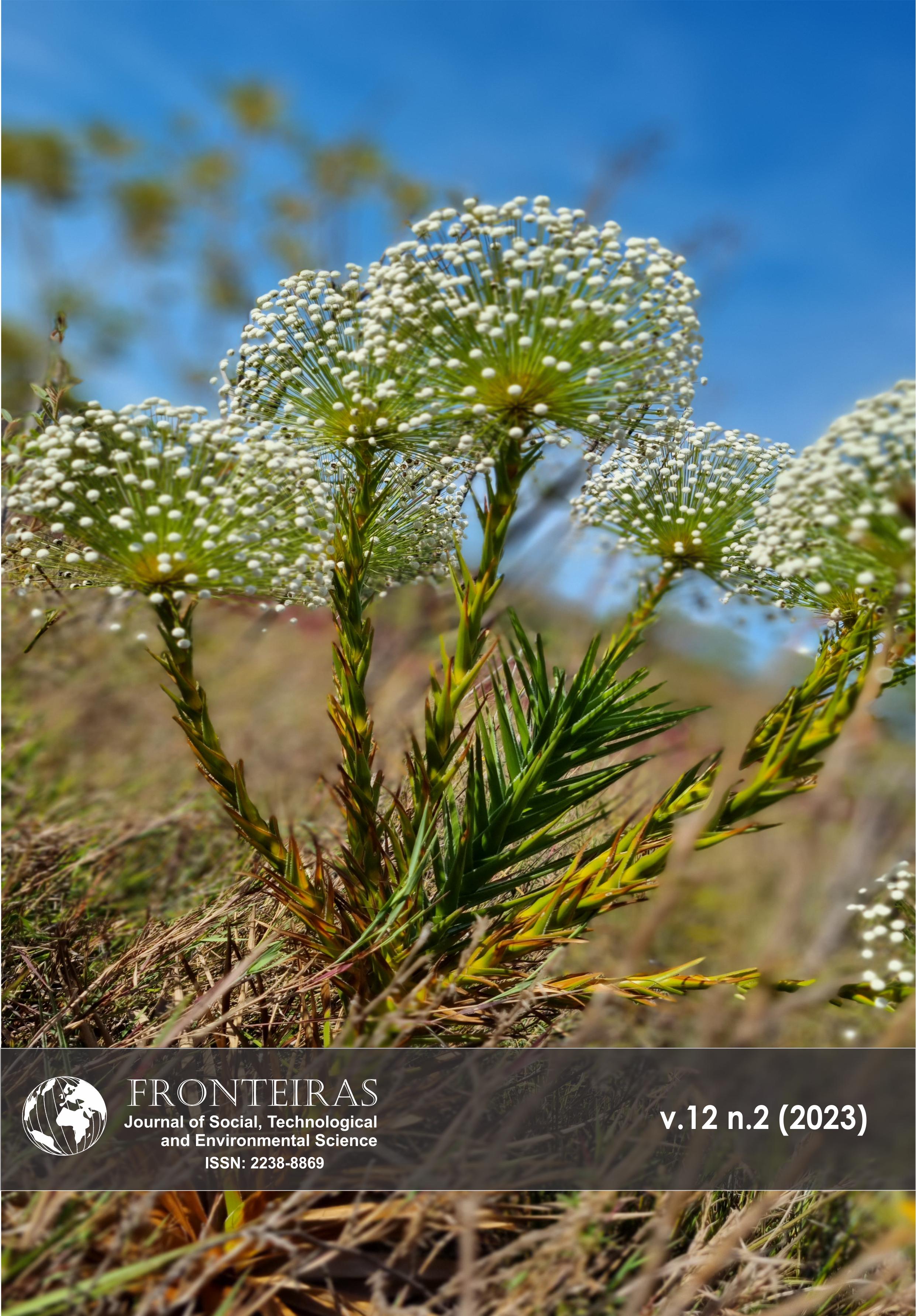Characterization and evaluation of two Agroforestry Systems in Southwest Paulista
DOI:
https://doi.org/10.21664/2238-8869.2023v12i2.p63-76Keywords:
family farming, agroecosystem, indicators, university extensionAbstract
The agroforestry systems (SAF) have been showing significant interest around the conservation of biodiversity and soil, besides presenting productive power and social and ecological development. However, there are obstacles that hinder the wide adoption of this model. The present work aims to characterize and evaluate the potentialities and difficulties of the SAF in the context of family farming. Interviews were conducted with semi-structured guides with two family farmers who have agroforestry systems, implemented in the years 2018 and 2019, as part of a university extension project linked to the Lagoa do Sino campus of UFSCar, in the municipalities of Itaberá - SP and Buri – SP, Brazil. The evaluation of the systems took place in a multidimensional way, through social, economic, and environmental indicators, built from literature and dialogues with farmers. The main results point to the advantages of the SAF for the agroecological transition and as a demonstration area, but also report the challenges they face, especially in terms of the lack of financial returns.
References
Altieri M 2004. Agroecologia: a dinâmica produtiva da agricultura sustentável, 4.ed. – Porto Alegre: Editora da UFRGS.
Barrionuevo M 2020. “¿ Cómo Se Evalúa Lo Económico En Las Experiencias Agroecológicas? Análisis de Las Perspectivas de 30 Instrumentos de Evaluación Del Desempeño Provenientes Del Sector Estatal, Privado y de La Economía Popular.” Revista Interdisciplinaria de Estudios Agrarios 52: 65–88.
Cândido G, Nóbrega M, Figueiredo M, Maior M 2015. “Avaliação Da Sustentabilidade De Unidades De Produção Agroecológicas: Um Estudo Comparativo Dos Métodos Idea E Mesmis.” Ambiente & Sociedade 18 (3): 99–120. https://doi.org/10.1590/1809-4422asoc756v1832015.
Caporal F Paulus G, Costabeber J 2009. Agroecologia: uma ciência do campo da complexidade. Brasília, 111 pp.
Carmo M 1998. A produção familiar como locus ideal da agricultura sustentável. Para pensar outra agricultura. Curitiba: ed. UFPR, p. 215-238.
Deponti C, Eckert C, Azambuja J 2002. Estratégia para construção de indicadores para avaliação da sustentabilidade e monitoramento de sistemas. Agroecologia e desenvolvimento rural sustentável, v. 3, n. 4, p. 44-52.
Duval H, Ribeiro M, Agapto J, Meira B, Silva Y, Garcia V, Serafim C 2021. Implantação de Sistemas Agroflorestais no Território Sudoeste Paulista: relatos de um projeto de extensão. In: Haliski A, Lopes K, Lopes P, Padilha R, (Orgs.). Saber e fazer Agroecológico. 1ed.Curitiba: Editora CRV Ltda., v. 1, p. 79-91.
Gavioli F, Costa M 2011. As múltiplas funções da agricultura familiar: um estudo no assentamento Monte Alegre, região de Araraquara (SP). Rev. Econ. Sociol. Rural, Brasília, v. 49, n. 2, p. 449-472.
Masera O, Astier M, López-Ridaura S 2000. El marco de Evaluación MESMIS. Sustentabilidad y Sistemas Campesinos. México: GIRA-Mundi-Prensa, p.13–44.
MESMIS 2021. Marco de Evaluación de Sistemas de Manejo Incorporando Indicadores de Sustentabilidad. Disponível em: <http://www.mesmis.unam.mx/>
Sambuichi R (org.) et al 2017. A política nacional de agroecologia e produção orgânica no Brasil: uma trajetória de luta pelo desenvolvimento rural sustentável.
Schuler H, Parra V, Joner F, Santos K, Simões-Ramos G, Siddique I 2017. “Benefícios de Sistemas Agroflorestais Agroecológicos (SAFAs) No Brasil: O Que Dizem Os Artigos Científicos?” X Congresso Brasileiro de Agroecologia, Brasília/DF. In: Anais Do VI CLAA, X CBA e V SEMDF, May 2017. https://cadernos.aba-agroecologia.org.br/cadernos/article/view/1494/236.
Souza M, Steindorff, A, Paula M, Formighieri E 2017. “SAFBD – Conhecimento Agroflorestal Ao Seu Alcance, o Banco de Dados de Parâmetros de Consórcio Para Sistemas Agroflorestais.” X Congresso Brasileiro de Agroecologia, Brasília/DF. In: Anais Do VI CLAA, X CBA e V SEMDF, May. https://cadernos.aba-agroecologia.org.br/cadernos/article/view/1057/590.
Souza R, Martins S, Verona L 2012. Gestão ambiental de agroecossistemas familiares mediante utilização do método MESMIS. XI Congresso da Sociedade Brasileira de Sistemas de Produção, , Pelotas/RS.
Speelman, E, Santiago L, Nuria A, Marta A and Masera O 2007. “Ten Years of Sustainability Evaluation Using the MESMIS Framework: Lessons Learned from Its Application in 28 Latin American Case Studies.” International Journal of Sustainable Development and World Ecology 14 (4): 345–61. https://doi.org/10.1080/13504500709469735.
Steenbock W, da Silva R, Froufe L and Seoane C 2013. Agroflorestas e sistemas agroflorestais no espaço e no tempo. In: Steenbock W, Silva L, Silva R et al (eds) Agrofloresta, ecologia e sociedade. Kairós, Curitiba, 39–60 pp.
Downloads
Published
How to Cite
Issue
Section
License
This journal offers immediate free access to its content, following the principle that providing free scientific knowledge to the public, we provides greater global democratization of knowledge.
As of the publication in the journal the authors have copyright and publication rights of their articles without restrictions.
The Revista Fronteiras: Journal of Social, Technological and Environmental Science follows the legal precepts of the Creative Commons - Attribution-NonCommercial-ShareAlike 4.0 International. 

